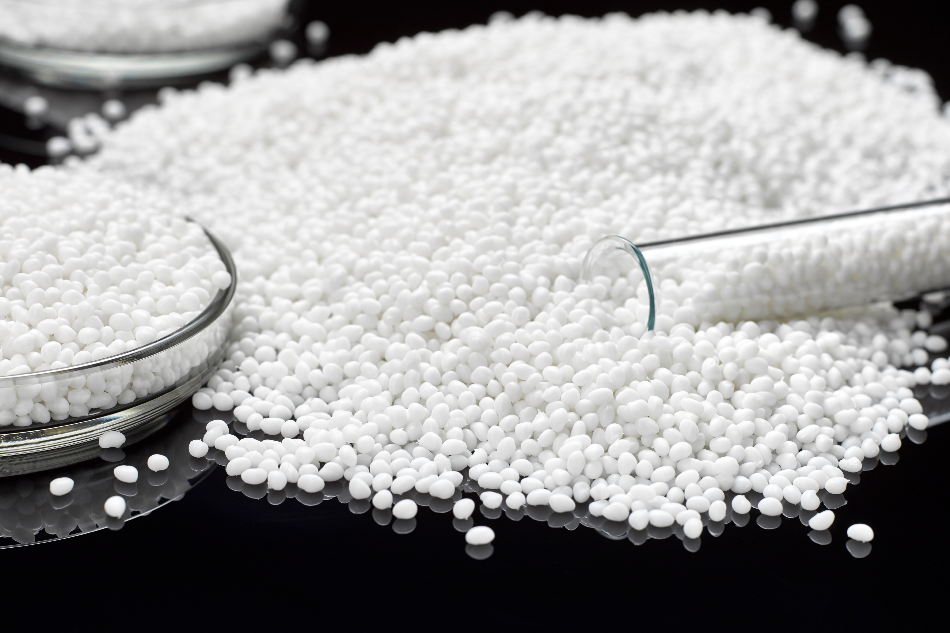
Image Credit: SergeyKlopotov/Shutterstock.com
Controlled radical polymerization is a means of manufacturing highly branched three-dimensional macromolecules known as hyperbranched polymers. It might employ inimers, compounds containing an initiating group and a vinyl group in one molecule, or transmers, a compound containing a chain transfer group and a vinyl group in one molecule.
Inimers and transmers possess numerous functional groups which can be homopolymerized or copolymerized with monovinyl monomers producing hyperbranched polymers and hyperstar polymers with tunable molecular weights, compositions and degree of branching (DB).
Highly branched polymers consisting of dendrimers and hyperbranched polymers are macromolecules exhibiting a compact structure, lots of branching linkers, a 3D spherical shape and multiple chain-end groups. They have numerous applications, from specialty additives, lubricants and nanomedicine to molecular catalysis.
Various methods developed to synthesize hyperbranched polymers exist, including self-condensing vinyl polymerization (SCVP), which requires the use of controlled radical polymerization (CRP).
Broadly speaking, there are three fundamental CRP techniques: Atom Transfer Radical Polymerization (ATRP) using AB* inimers (compounds containing initiator fragment B* and vinyl group A in one molecule; Reversible Addition/Fragmentation Chain Transfer Polymerization (RAFT) of transmers; and Nitroxide-mediated Polymerization (NMP).
Atom Transfer Radical Polymerization
Atom transfer radical polymerization (ATRP) is one of the most successful synthetic procedures for developing polymers with predetermined molecular weights, narrow molecular weight distributions, and high degrees of chain-end functionalities.
There are various AB* inimer structures resulting from ATRP SCVP, and three types of inimers exist in terms of a polymerizable vinyl group (A group): acrylate inimers, styrenyl inimers and methacrylate inimers. The other ends of these AB* inimers all contained alkyl halide groups such as alkyl bromide or alkyl chloride.
The branched structure of polymers synthesized via ATRP of AB* inimers can be damaged by the competition between radical propagation and deactivation reactions. The propagating radical from the activation of an alkyl halide could be deactivated or react with a new inimer to form a linear unit (such as Lv).
Increasing the rate ratio of propagation over deactivation means more units could be created from one radical in an activation/deactivation cycle, while simultaneously reducing how branched the polymers become. Fast deactivation reactions could halt the propagation of linear units and increase the chance of activating a different alkyl halide in another cycle, an essential step towards forming branched units.
Step-growth and chain-growth mechanisms both feature in SCVP of inimers. Through altering three polymerization parameters (temperature, ligand and solvents), it is possible to manipulate the reactivities of initiating groups and catalysts and the solubility of deactivators in the polymerization solution, resulting in polymers with different architectures.
Reversible Addition/Fragmentation Chain Transfer Polymerization
RAFT polymerization is a reversible deactivation radical polymerization. Advantages include the ability to control most monomers polymerizable by radical polymerization, acceptance of vulnerable functionality in monomer and solvents, compatibility with reaction conditions and ease of implementation, and low-cost relative to competitive technologies.
Key to the process is a chain transfer agent (CTA), a thiocarbonylthio compound exhibiting the structure Z(C=S)SR, which mediates the equilibrium between active and dormant chains. The Z-group creates the thiocarbonyl double bond and provides stability to the intermediate formed when radicals are added to the CTA. The R-group is capable of kick-starting RAFT polymerization after fragmentation.
The monomer utilized in RAFT SCVP is a polymerizable vinyl group (the A group) connected to the CTA structure (akin to the B* group) on the R-group or Z-group side. The polymerizable CTA utilized needs an external radical source to break the S–R bond and create a propagating radical. This polymerizable CTA is also known as a transmer.
Most RAFT polymerizations of transmers have been conducted by self-condensing vinyl copolymerization (SCVCP) with various functional monovinyl monomers, making it easy to tune DB and introduce reactive groups.
Adding monovinyl monomers lessened branching density and to realize uniform distribution of branching units in the copolymer structure, similar reactivity between the polymerizable group of the transmer and the vinyl group of the comonomer is critical.
Nitroxide-Mediated Polymerization
NMP was first reported in 1993 and quickly applied to the synthesis of hyperbranched polymers; a styrenic AB* inimer functionalized with an alkoxyamine initiating group was homopolymerized at to produce a hyperbranched polymer. The resultant polymer was then used as a macroinitiator for a second-step chain extension to produce a hyperbranched star (hyperstar) polymer.
This represents the first example on the synthesis of hyperstar polymers using hyperbranched polymers as MIs. Applying this technique to inimers has been used for the preparation of hyperbranched polymers, but it does have its limitation including slow polymerization kinetics, the high temperatures necessary, the inability to easily control methacrylate polymerization and the multi-step synthesis of alkoxyamine-based inimers.
Conclusion
Controlled radical polymerization (CRP) via NMP, ATRP and RAFT to produce hyperbranched polymers has received much research interest over the years. They have been explored for use in numerous applications including drug delivery, imaging diagnostics and catalysis.
By copolymerizing monovinyl monomers with inimers or transmers, SCVP could be stretched to SCVCP to allow functionalization of the hyperbranched copolymers with many reactive groups and tunable DB values.
References and Further Reading
Wang X et al (2017) Recent Progress on Hyperbranched Polymers Synthesized via Radical-Based Self-Condensing Vinyl Polymerization Polymers
http://doi.org/10.3390/polym9060188
Controlled Radical Materials Science Polymerization Guide
https://www.sigmaaldrich.com/deepweb/assets/sigmaaldrich/marketing/global/documents/716/722/crp-guide-br5077en-mk.pdf
Disclaimer: The views expressed here are those of the author expressed in their private capacity and do not necessarily represent the views of AZoM.com Limited T/A AZoNetwork the owner and operator of this website. This disclaimer forms part of the Terms and conditions of use of this website.